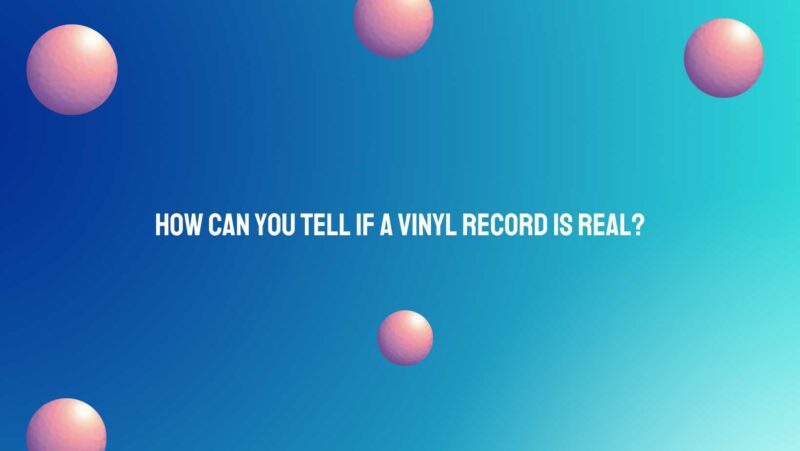Vinyl records have seen a resurgence in popularity, thanks to their warm analog sound and nostalgic appeal. However, as vinyl collecting gains momentum, so does the market for counterfeit and fake records. Discerning collectors and audiophiles are often on the lookout for genuine vinyl records to ensure they are getting the authentic analog experience. In this comprehensive article, we will explore various methods and tips to help you determine if a vinyl record is real.
1. Inspect the Label and Artwork
One of the first steps in verifying the authenticity of a vinyl record is to carefully examine the label and artwork. Look for the following details:
- Label Design: Familiarize yourself with the label design of the original release. Genuine records should have labels that match the design of the original release, including the font, colors, and layout.
- Label Information: Check the information on the label, such as the catalog number, artist’s name, album title, and tracklisting. Discrepancies or errors in this information can be red flags.
- Artwork Quality: Examine the artwork for signs of low-quality printing or pixelation. Genuine records should have sharp and clear artwork.
2. Analyze the Vinyl
The physical characteristics of the vinyl itself can provide valuable clues about its authenticity:
- Weight: Genuine vinyl records are typically heavier than counterfeit ones. Invest in a digital kitchen scale and compare the weight of the suspect record to that of a known genuine copy.
- Runout Groove Etchings: Inspect the runout grooves (the space between the end of the music and the label) for etchings or inscriptions. Authentic records often feature matrix numbers, catalog numbers, and even messages from the mastering engineers.
3. Study the Vinyl Grooves
The grooves on a vinyl record contain the audio information and can reveal important details:
- Groove Depth: Authentic records tend to have consistent groove depth. Counterfeit records may exhibit shallow or uneven grooves, affecting playback quality.
- Inspect Scratches and Blemishes: Scratches, scuffs, and blemishes on the vinyl can be indicative of wear or counterfeit production. Genuine records should have minimal wear if they have been well-preserved.
4. Check for Original Packaging
The packaging of a vinyl record, including the album cover and inner sleeves, can provide additional clues:
- Quality of Printing: Analyze the quality of the printing on the album cover, inner sleeves, and any inserts. Genuine records usually have high-quality printing with sharp details.
- Inner Sleeve Details: Original releases often include inner sleeves with artwork, lyrics, or additional information about the album. Check for discrepancies in the inner sleeve design and content.
5. Seek Expert Opinion
If you’re unsure about the authenticity of a vinyl record, consider seeking the opinion of experts or experienced collectors. Online vinyl forums and communities can be valuable resources for getting feedback and guidance. You can also consult with vinyl record stores or specialized dealers who may be able to provide insight.
6. Purchase from Reputable Sources
To reduce the risk of acquiring counterfeit vinyl records, purchase from reputable sources such as established record stores, authorized online retailers, or directly from the artist’s official website. Beware of deals that seem too good to be true, as counterfeiters often offer records at significantly lower prices.
Conclusion
Identifying genuine vinyl records requires a combination of careful examination, knowledge of the original release, and an understanding of common counterfeiting techniques. By inspecting the label, artwork, vinyl, and packaging, as well as seeking expert opinions when in doubt, collectors and enthusiasts can increase their confidence in acquiring authentic vinyl records. Remember that the joy of vinyl collecting lies not just in the music but also in the history and authenticity of the records themselves.


